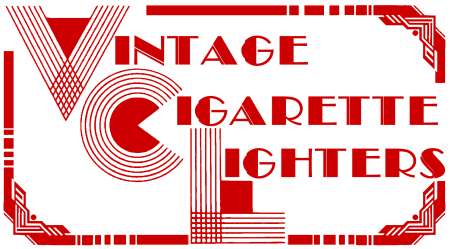 |
| Original Patent US2032695 |
As a lighter collector, some of the most important documents to study are lighter patents. Utility patents tell the lighter inventor's name, date of application, date approved, assignee if such, and show mechanism diagrams plus have a description of how the mechanism works and why the lighter is important. By understanding lighter patents, one can have an insight into the thought process of the inventor(s).
For the past 10 years, I have studied lighter patents plus design patents from the USA, UK, Germany, France, Austria, Switzerland, and Canada. In my opinion, the 1934 Zippo lighter was invented by George Gimera and not George Blaisdell.
First, the lead inventor name on the patent is Gimera and not Blaisdell. Based on all the other American patents I’ve seen, the lead name is the true inventor. My opinion is that Blaisdell was the businessman who decided to go into the lighter business and his expertise was sales and management.
 |
| Second Patent US2517191 |
Blaisdell started Zippo by importing windproof pocket lighters from Austria in 1932. Austria was the home of the flint and numerous Austrian companies exported lighters to the U.S.A. starting about 1909. The windproof cased models first came into popularity in the late 1920s and in 1932 Blaisdell started importing an inexpensive stormproof pocket lighters with a pull off, snuffer cased top and smokestack style windscreen.
Blaisdell , having success , then decided to develop his own model as an improvement to the two piece lighter. He got involved with a few partners and hired George Gimera to invent the new lighter. There are 5 names listed as partners in the Zippo manufacturing company in the patent subtitle, besides Blaisdell and Gimera. It lists: Frank Calkins, WG Blaisdell and George Morris.
The improvement to the Austrian lighter was making a hinged cover version with minimum of projections when the case is closed. Hence , the 1934 outside hinge, tall model.
 |
| Third Patent US2704447 |
For lighter purists, no Zippo marked patent pending was manufactured before May of 1934. If there is an earlier 1933 version, it cannot be marked patent pending. I truly believe the first Zippo dates 1934. Back in the 1930s , as today , there is a monetary penalty for falsely stating a patent application has been submitted to the us patent office. Certainly, anyone with Blaisdell’s business sense would not claim an incorrect date, thus making 1934 the first year of the Zippo lighter.
Owning a patent was vital to protect one's design and invention. In the 1930s , holders of patents were entitled to certain personal tax benefits on the profits derived from the manufacturing and sales of the invention. This is another reason why Blaisdell’s name appears under Gimera on the patent. By saying he is part inventor, he would be rewarded with tax incentives.
 |
| 4th Barcroft Model Patent US2774234 |
The next reason showing Gimera is inventor the story is mostly my intuition. When I asked former Zippo employees and archives managers what happened to Gimera, there is no information available. The original 1934 outside hinge model invented by Gimera was actually a flawed lighter. The hinge was unstable and weak which with minimal use became loose thus rendering the lighter case unusable. Blaisdell quickly realized to save the company he had to offer free repair, thus beginning his "fix it free" campaign. At that time Blaisdell likely parted ways with Gimera for failing to design a sturdy quality product.
But, more convincing than the above ideas, is the fact that Blaisdell never really invented or designed any other lighter of consequence. Blaisdell even went out of the company to hire both an Evans and ASR executive to design some of Zippo’s table models. When you study patents you clearly see that inventors continually invent, design, improve and add new ideas. Had Blaisdell been an inventor or designer, there would be no need to hire outside industrial designers. For those of you who know any designers or inventors, the statement "designers design and inventors invent" bears the truth.
 |
| Stahl Patent USD163651 |
I have included copies of all the 1934 and 1961 Zippo patents and a few have interesting history.
2517191, an improvement by Lester Flickinger where again Blaisdell is listed as minor inventor.
2704447, another improvement by Flickinger, not listing Blaisdell.
2774234, this is the fourth model Barcroft table lighter, utilizing a small size Zippo fitment rather than large fitment. Here Blaisdell is the lead inventor with Flickinger as minor inventor, but the lighter is actually just a blend of third model Barcroft design with pocket insert mechanism. Blaisdell likely wanted to reduce costs by eliminating table insert units.
 |
| Reilly Corinthian Patent USD191467 |
D163651 is a design patent and was done by Gerald Stahl. Stahl was a designer for ASR and also previously invented the Metalfield combination automatic case lighter in 1948.
D191467 is the design for the Corinthian model and done by William Reilly of Evans case company. It is based on the enamel table models Evans made in the 1950s.
Over the years, Blaisdell became very successful as the Zippo lighter became a popular brand throughout America. As one of my favorite John Wayne movies, The Man who Shot Liberty Valance, states, "When the legend becomes fact, print the legend." This seems to be the case where Blaisdell gets the credit for Gimera’s invention.
|

